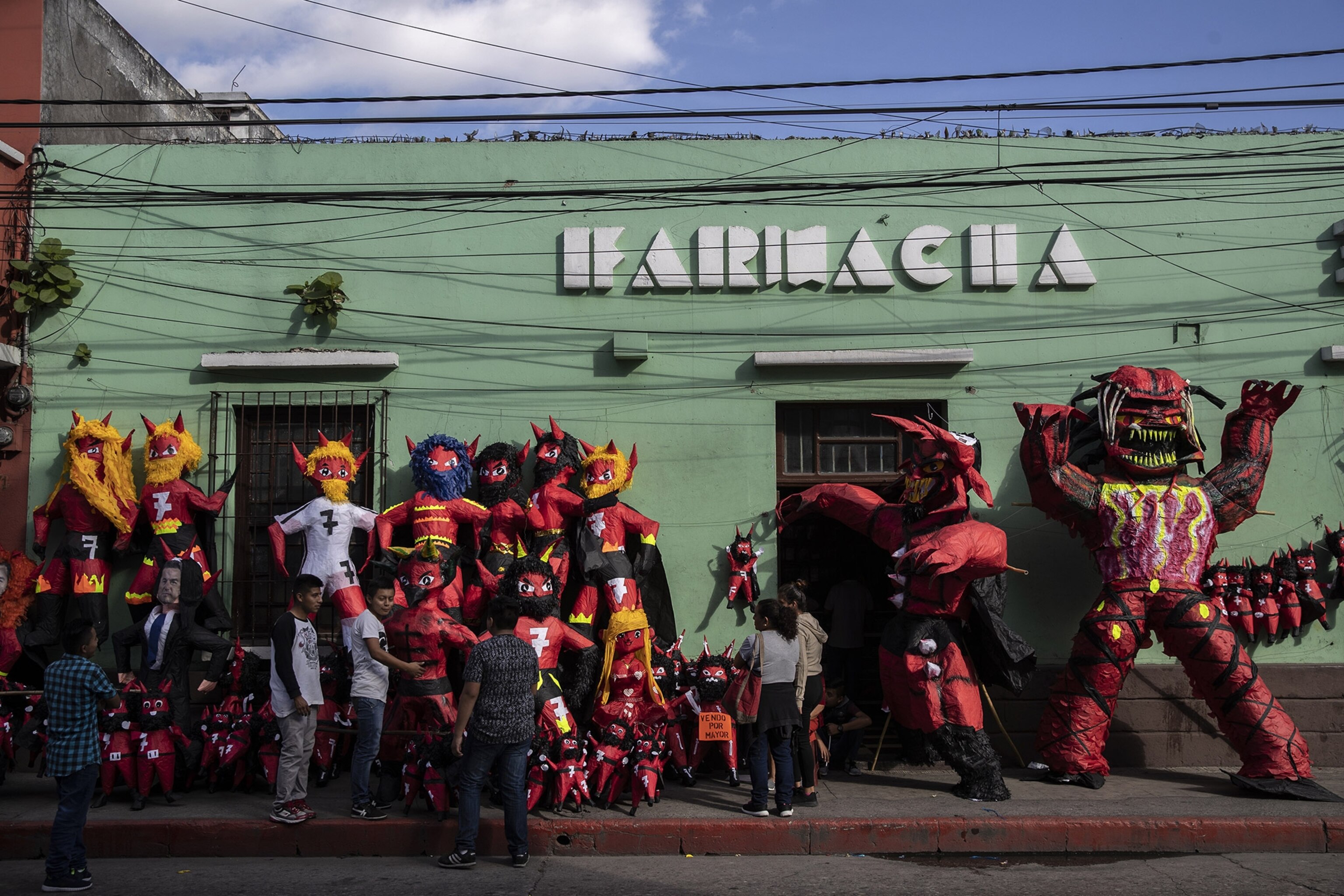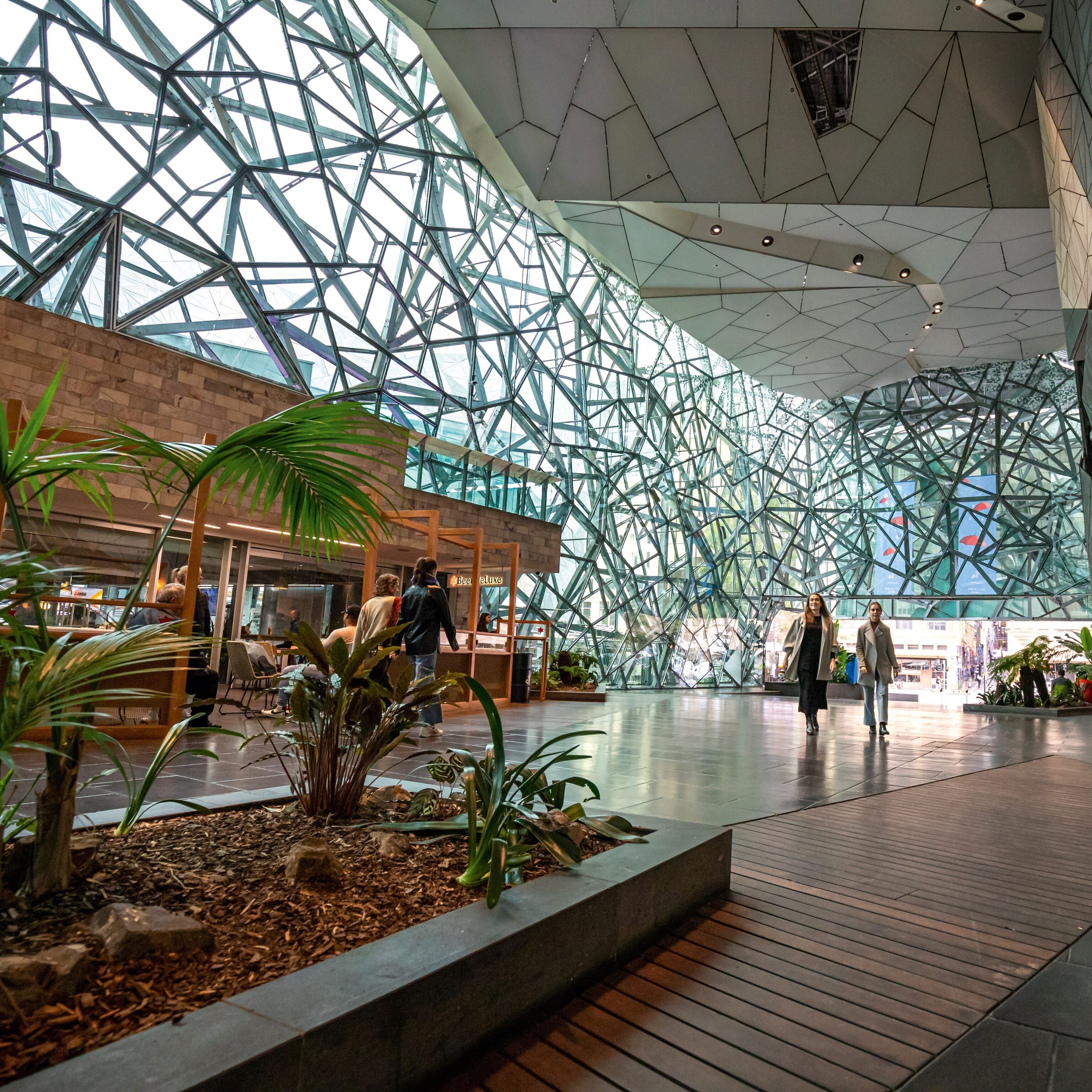
These paper crafts bring the party on Day of the Dead
Piñatas, skeletons, and other Mexican papier-mâché art celebrates European and indigenous culture from San Miguel de Allende to Mexico City.
In Mexico, it’s hard to go to a party, attend a street festival, or deck out a house for a holiday without encountering papier-mâché. The colorful paper craft—known as cartonería (from the Spanish word for cardboard)—headlines on skeletons and otherworldly beings during Día de los Muertos (Day of the Dead) and on piñatas at kids’ birthdays and Christmas.
(Related: Happy skeletons and sugar skulls: What to know about Day of the Dead.)



Like many Latin American customs, cartonería has roots in European colonialism and Catholicism. But Mexico’s paper works burst with every-day-is-a-fiesta whimsy (lifesize skeletons with sly grins) and dark, timely humor (whack these COVID-19 piñatas). Here’s how the colorful practice started, plus where to see and buy papier-mâché in all its temporal glory.
European and indigenous customs
Unlike gleaming talavera tiles in Puebla or embroidered blouses from Chiapas, most cartonería is ephemeral. Travelers to Mexico City, Oaxaca, and Guanajuato state spot it as inexpensive dolls called lupitas, skull masks for a single posada (procession), or Judas Iscariot effigies packed with fireworks and blown up during Lent.
“Cartonería is like street art: You spray paint the wall but don’t expect it to be there in five years,” says Leigh Ann Thelmadatter, the Mexico City-based author of Mexican Cartonería: Paper, Paste, and Fiesta. “It’s about creation, not lasting art.”
Mexicans didn’t invent papier-mâché. Neither did the French, who gave it its name, which translates as “chewed paper.” The earliest known pieces crafted from wood pulp and glue come from the Han Dynasty in China (c. 202 B.C.-220 A.D.) and include soldiers’ helmets and pot lids. Although paper—also a Chinese innovation—can be thin and soft, when layered or fortified with a bonding agent (e.g. lacquer, flour-and-water paste) it becomes stiff and durable.
Papier-mâché spread to Europe during the 16th through 18th centuries, where it was molded into boxes, trays, toys, and even furniture. “Cartonería most likely came to Mexico during the colonial era,” says Hermés Arroyo, a mojigangas (oversized puppet) artisan in San Miguel de Allende. Similar giant figures of saints and Jesus starred in religious services and festivals in Spain and colonial Mexico; modern artisans like Arroyo shape 16- to 20-foot tall busty brides and rakish grooms, crazy-eyed devils, and Día de los Muertos skeletons.
(Related: Why San Miguel de Allende buzzes for coffee lovers.)
Each mojiganga has a vibrantly painted papier-mâché head and torso attached to a fabric costume and arms. Puppeteers operate them by stepping into wooden shoulder harnesses and then twirl and whirl in parades and protests around the country. The puppets are popular hired guests at San Miguel de Allende weddings. “San Miguel is creative, quirky, and well-known for its arts community. They just fit in here,” says Arroyo, who rents out 20 bride and groom couples.
Piñatas, from pineapples to parties
Piñatas blend disparate influences. On his extended visit to China in the late 13th century, Italian explorer Marco Polo saw locals smashing paper-covered clay vessels shaped like cows and water buffalo, which spilled seeds for the poor to gather. The practice of breaking clay pots filled with offerings migrated to Italy and Spain in the 14th century. Spainards thought the decorated pots resembled piñas (pineapples), and piñatas got their name.
The Spanish brought piñatas to Mexico in the 16th century, where they probably merged with indigenous pot-bashing games. Among the first piñatas, still popular at Christmas: outsized, seven-pointed stars festooned with fringed tissue paper. Historians believe the points represented the seven deadly sins; breaking the thing symbolized charity and salvation.

“They started out as something religious, broken to divide the bounty inside,” says Tey Marianna Nunn, the director of the National Hispanic Cultural Center in Albuquerque, New Mexico. “Piñatas continue to be about sharing, whether that’s a family event or a child’s birthday party.”
The museum at NHCC mounted an exhibit of more than 150 piñatas in 2017, including rainbow-striped burros, fringed stars, and likenesses of President Donald Trump and Hillary Clinton. “They’re such a social barometer now,” says Nunn. “Whatever is happening in politics, movies, or pop culture, the piñateros [piñata makers] are on it.”
New life from Day of the Dead
Día de los Muertos—marked each year from October 31 to November 2—is the liveliest time of year for Mexico’s papier-mâché makers. They’re slammed stringing together life-size calacas (skeletons), painting filigrees on skull masks, and applying shellac to faux loaves of bread and fruit to use as symbolic offerings on altars (ofrendas) to the dead.
“We have an endless number of ways to show skeletons,” says Leonardo Linares Vargas, a fifth-generation Mexico City cartoñero. “They can be Catrinas, the fancy hat-wearing women Diego Rivera created, padrecitos de garbanzo [tiny bone figures with chickpea heads], or decorated skulls.”
(Related: Can Mexico City’s mariachis survive the COVID-19 pandemic?)

It sounds creepy and dour, but Días de los Muertos remains a happy celebration of ancestors with bright decorations in cemeteries and homes, and, in normal years, street parties amid the pastel-hued colonial buildings of Oaxaca or in Mexico City’s Zócalo (main square). Candles, cut-paper banners (papel picado), and cartonería skeletons decorate two-story-tall ofrendas in the capital’s 600,000-plus-square foot center as locals and tourists in spooky masks amble by.
Magical animals run wild
For the past several years, Mexico City’s Day of the Dead has included outdoor displays of compact car–size magical animals called alebrijes. Exhibited near the Zócalo, the critters delightfully go against nature with multiple, disparate parts—say, eagle talons, butterfly wings, leopard legs, and rabbit ears—merged into a single fantastic creature.
“Alebrijes can contain as many animals as our imagination allows us,” says Ramón Espinoza, a member of Colectivo Última Hora, which produces them and Godzilla-scale skeletons for Day of the Dead events, including a virtual one this year.
(Related: On Day of the Dead, Oaxaca offers up this special bread.)
Alebrijes aren’t an age-old tradition and they aren’t all enormous. Like many examples of Mexican cartonería, they evolved from a pinch of colonial Catholicism and a heap of Mexican creativity. Leonardo Linares Vargas’s grandfather Pedro Linares is credited with inventing the beautiful beasts in the mid 20th century. His Cabinet of Dr. Caligari–esque mash ups caught on with collectors, including Mexico City muralist Diego Rivera.
“I might put in the body of a bird and a snake neck, then a head with goat horns and bulging toad eyes,” says Vargas, who carries on his grandfather’s craft. “Two or four animals come together till you only see one.”
Travelers can view alebrijes and other cartonería in Mexico City at the Museo de Arte Popular and the Museo Casa Estudio Diego Rivera. In the U.S., Santa Fe’s Museum of International Folk Art showcases masks, alebrijes, and several graveyards’ worth of skeletons.
It’s tempting to bring the riotous colors and quirky charm of cartonería home. Look for it at San Miguel’s buzzing Mercado de Artesanías or Mexico City’s Tekitl Cartonería.
“But the best place for cartonería is at festivals and parties,” says Thelmadatter. “You’re witnessing things in their original context. Do you want to see a piñata at a museum or a birthday party?”
You May Also Like
Go Further
Animals
- Octopuses have a lot of secrets. Can you guess 8 of them?
- Animals
- Feature
Octopuses have a lot of secrets. Can you guess 8 of them? - This biologist and her rescue dog help protect bears in the AndesThis biologist and her rescue dog help protect bears in the Andes
- An octopus invited this writer into her tank—and her secret worldAn octopus invited this writer into her tank—and her secret world
- Peace-loving bonobos are more aggressive than we thoughtPeace-loving bonobos are more aggressive than we thought
Environment
- Listen to 30 years of climate change transformed into haunting musicListen to 30 years of climate change transformed into haunting music
- This ancient society tried to stop El Niño—with child sacrificeThis ancient society tried to stop El Niño—with child sacrifice
- U.S. plans to clean its drinking water. What does that mean?U.S. plans to clean its drinking water. What does that mean?
- Food systems: supporting the triangle of food security, Video Story
- Paid Content
Food systems: supporting the triangle of food security - Will we ever solve the mystery of the Mima mounds?Will we ever solve the mystery of the Mima mounds?
History & Culture
- Strange clues in a Maya temple reveal a fiery political dramaStrange clues in a Maya temple reveal a fiery political drama
- How technology is revealing secrets in these ancient scrollsHow technology is revealing secrets in these ancient scrolls
- Pilgrimages aren’t just spiritual anymore. They’re a workout.Pilgrimages aren’t just spiritual anymore. They’re a workout.
- This ancient society tried to stop El Niño—with child sacrificeThis ancient society tried to stop El Niño—with child sacrifice
- This ancient cure was just revived in a lab. Does it work?This ancient cure was just revived in a lab. Does it work?
Science
- The unexpected health benefits of Ozempic and MounjaroThe unexpected health benefits of Ozempic and Mounjaro
- Do you have an inner monologue? Here’s what it reveals about you.Do you have an inner monologue? Here’s what it reveals about you.
- Jupiter’s volcanic moon Io has been erupting for billions of yearsJupiter’s volcanic moon Io has been erupting for billions of years
- This 80-foot-long sea monster was the killer whale of its timeThis 80-foot-long sea monster was the killer whale of its time
Travel
- Spend a night at the museum at these 7 spots around the worldSpend a night at the museum at these 7 spots around the world
- How nanobreweries are shaking up Portland's beer sceneHow nanobreweries are shaking up Portland's beer scene
- How to plan an epic summer trip to a national parkHow to plan an epic summer trip to a national park
- This town is the Alps' first European Capital of CultureThis town is the Alps' first European Capital of Culture






